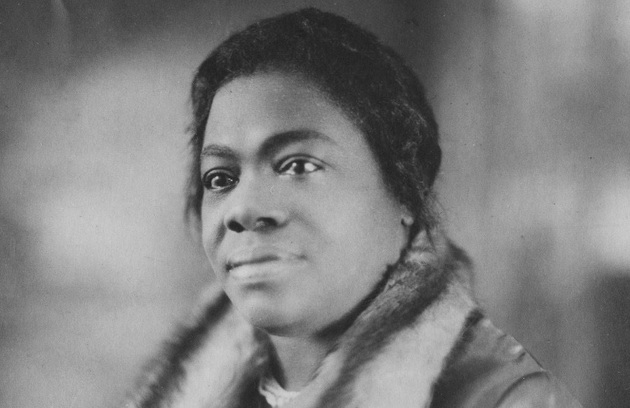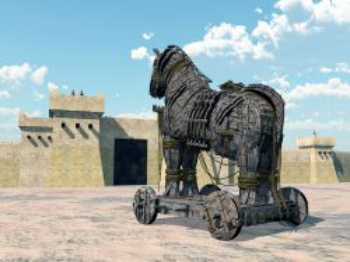English Revolution is the name given to a series of conflicts that took place in England between the years 1640 and 1688 that led to the transition from absolutist monarchy to parliamentary monarchy - model adopted until today in the country.
This revolution marks the end of absolutism and takes place in the context of the rise of the bourgeoisie, which grew stronger between the 15th and 16th centuries and began to demand political changes.
The English Revolution was the first bourgeois revolution in the world, she paves the way for England to be the main stage of the Industrial Revolution in the nineteenth century.
The 48-year period of the English Revolution can be divided into 4 phases: Civil War and Puritan Revolution, Oliver Cromwell's Republic, Restoration of the Stuart Dynasty and Glorious Revolution. But before entering the phases of the revolution, it is important to understand the context of 16th and 17th century England.
The context and causes of the English Revolution
Throughout the 15th century, England was ruled by the
Tudor dynasty, whose main monarchs were King Henry VIII and Queen Elizabeth I. Tudor dynasty illustration, with Henry VIII seated on the throne.
Tudor dynasty illustration, with Henry VIII seated on the throne.
During this period, there was the strengthening of the bourgeois class, especially after the Anglican Revolution, when feudal lands that were in the domain of the Catholic Church became private property.
These lands began to be used by the bourgeoisie for mineral exploration or agriculture, causing a great rural exodus. It was the beginning of land use from a capitalist logic.
In 1603, Elizabeth I dies and begins to stuart dynasty, with King James I. In order to maintain the monarchic and absolutist power, James I began to adopt measures to contain the advance of the bourgeoisie, such as raising taxes and dissolving the parliament.
In recent years the bourgeois had gained strength in the House of Commons, which was opposed to House of Lords in parliament. The House of Lords supported the Crown.
In 1625 James I dies and Charles I assumes power. Carlos I continues to adopt absolutist measures and prevent the population from participating in politics.
The conflict between different strata of society also had a religious character. King Charles I was more related to the Catholic Church, while the bourgeoisie was more adept at Puritanism, a Protestant religion.
Carlos I ruled without consulting parliament, which was dissolved when he assumed power. In 1940, however, due to financial difficulties faced by England, King Charles I decides to consult parliament to raise taxes.
The parliament did not accept the tax increase and tried to demand more political participation from the king. Dissatisfied, the king dissolved the parliament again and thus began the first phase of the English Revolution, called the Civil War or Puritan Revolution.
Understand what the bourgeoisie, monarchy and dynasty.
Puritan Revolution and Civil War (1640 - 1649)
This phase is characterized by the conflict between king and parliament. The king's supporters were Catholics, Anglicans and the nobility. The supporters of the parliament were the bourgeoisie, the gentry and the Puritans. (Gentry they were rich people who did not have the title of noble).
Know what the titles of the nobility.
At first the king's army got some advantages, but the military chief of the parliament's army, Oliver Cromwell, adopts some measures that would guarantee victory in the conflict.
Cromwell defines that the high posts of the army would be occupied by meritocracy and start training your troop. The army of parliament was called the "round heads", as they refused to wear wigs like the nobles.
Oliver Cromwell and the round heads win the war. Charles I flees to Scotland, but on his return to England he is convicted of treason and beheaded.
Within the army of parliament, during the Civil War, two radical groups emerged: the Levellers and the Diggers.
- Levellers: they defended equal rights, democracy and universal suffrage.
- Diggers: rural workers who defended agrarian reform.
Oliver Cromwell's Republic (1649 - 1658)
With the death of King Charles I, Oliver Cromwell assumes power and calls himself "Lord Protector of the Republic". The measures adopted by Cromwell sought to benefit the bourgeoisie.
One of his most famous actions was the Navigation Acts, according to which, any product arriving in England should be on an English ship. This protectionist measure benefited British merchants and contributed to economic growth in the period.
Cromwell, however, following the model of the leaders he had fought, becomes a authoritarian leader. In 1653 it dissolves the parliament and kills leaders of the levellers and diggers, who had helped him win the Civil War.
In 1658 Oliver Cromwell dies and his son Richard Cromwell assumes power. Richard resigns from power and then parliament restores the monarchy with the Stuart family, placing Charles II, the son of the beheaded king, on the throne.
Restoration of the Stuart Dynasty (1660 - 1688)
Carlos II starts his government allowing the participation of the parliament, but then begins to articulate with members of the nobility, carries out religious persecutions against the Puritans and in 1681 dissolves the parliament.
 King Charles II.
King Charles II.
In 1685 Charles II dies and takes over James II, who continues to adopt measures to harm the bourgeoisie and members of parliament. The parliament then plans a conspiracy to take power out of James II's hands, paving the way for the Glorious Revolution.
Glorious Revolution (1688)
Parliament proposes that William of Orange assume power in England. William was governor of the Netherlands (now Holland) and married to Mary II, daughter of James II.
William would become King of England on condition that he accept the law Bill of Rights, also known as 1689 Bill of Rights. This law determined that the king was inferior to parliament and that who actually governs was the prime minister and other parliamentarians.
William of Orange accepts the proposal and invades England. As there was no reaction on the part of James II, nor any kind of violence, this episode became known as the Glorious Revolution.
The Glorious Revolution puts an end to the English Revolution and the absolutist monarchy, inaugurating the parliamentary monarchy, which is still in force today.
In this new political model, the bourgeoisie gets majority in parliament, which explains the outbreak of the Industrial Revolution years later.
Learn more about Industrial Revolution.


